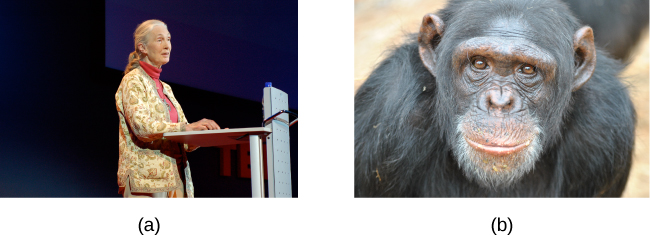Naturalistic Observation
To truly understand how behavior occurs, one of the best ways to gather information is to observe it in its natural setting. This approach is called naturalistic observation—watching behavior as it happens, without manipulating the situation.
naturalistic observation
Naturalistic observation is scientific research obtained by observing behavior in its natural setting.
It allows researchers to study behavior as it naturally unfolds, offering unmatched realism and insight. But this realism comes with trade-offs—less control, potential bias, and significant time investment.
The Challenge of Observation
When people know they’re being observed, their behavior often changes. So how can researchers collect accurate information about real behavior?
Imagine your professor asks everyone to raise their hand if they always wash their hands after using the restroom. Nearly everyone might raise a hand—but is that completely honest? People often give socially desirable answers instead of truthful ones.
To get a clearer picture, a researcher could quietly observe hand-washing behavior in a restroom. Of course, they wouldn’t sit there in a lab coat with a clipboard. Instead, they might stand at a sink pretending to fix their hair while discreetly recording observations.
This kind of unobtrusive data collection captures what people actually do, not just what they say they do.
Staying Inconspicuous
Remaining as inconspicuous as possible is essential in naturalistic observation.
Consider how your driving might change in two scenarios:
- You’re driving alone on a quiet highway.
- A police car is following closely behind you.
Even though your behavior is “natural” in both cases, awareness of being watched changes what you do.
Psychologist Suzanne Fanger and colleagues at the University of Texas wanted to understand how preschool children interact with peers—especially why some children get excluded.
They observed children playing on a playground, equipping a few with wireless microphones (which the kids quickly forgot about) and taking notes from a distance.
Because the children were used to having observers around, they behaved normally, allowing researchers to gather authentic data (Fanger, Frankel, & Hazen, 2012).
Structured Observation: The Strange Situation
Sometimes studies involve structured observation. In these cases, people are observed while engaging in set, specific tasks. An excellent example of structured observation comes from research done by Mary Ainsworth on children’s behavior when interacting with their caregivers or other strangers. In this scenario, caregivers bring their infants into a room filled with toys. The Strange Situation involves a number of phases, including a stranger coming into the room, the caregiver leaving the room, and the caregiver’s return to the room. The infant’s behavior is closely monitored at each phase, but the researchers are most interested in the behavior of the infant upon being reunited with the caregiver because this gives insights into their attachment style.
Naturalistic Observation and Animals
Observing Animals in the Wild
Naturalistic observation isn’t limited to humans. Many classic studies involve observing animals in their natural environments. Researchers maintain distance and avoid interference to keep animal behavior authentic.
This method has revealed how species—from ground squirrels to gorillas—form social groups, establish hierarchies, and communicate.
One of the most influential examples comes from Jane Goodall, who spent nearly five decades studying chimpanzees in Tanzania. Her observations transformed our understanding of primate behavior and social life. Some critics argued that naming the chimps (rather than assigning numbers) might compromise scientific objectivity (McKie, 2010), but her work remains a landmark in psychology and anthropology.

Strengths of Naturalistic Observation
-
High ecological validity: Because behavior occurs in real contexts, findings are realistic and generalizable.
-
Rich, detailed data: Researchers can capture subtle, spontaneous interactions that might not appear in laboratory settings.
-
Hypothesis generation: Observations often inspire future experimental research.
For example, watching preschoolers at play or chimpanzees grooming can reveal patterns that later lead to testable theories.
Limitations of Naturalistic Observation
-
Lack of control: Researchers can’t control when or how the target behavior occurs. A gorilla troop might move away or the restroom might stay empty all day.
-
Time and cost: Field studies often require patience, travel, and extended observation periods.
-
Observer bias: Researchers may unintentionally interpret behavior in ways that confirm their expectations.
To reduce bias, scientists establish clear behavioral criteria and use multiple observers to check for inter-rater reliability—how consistently different observers record the same behavior.